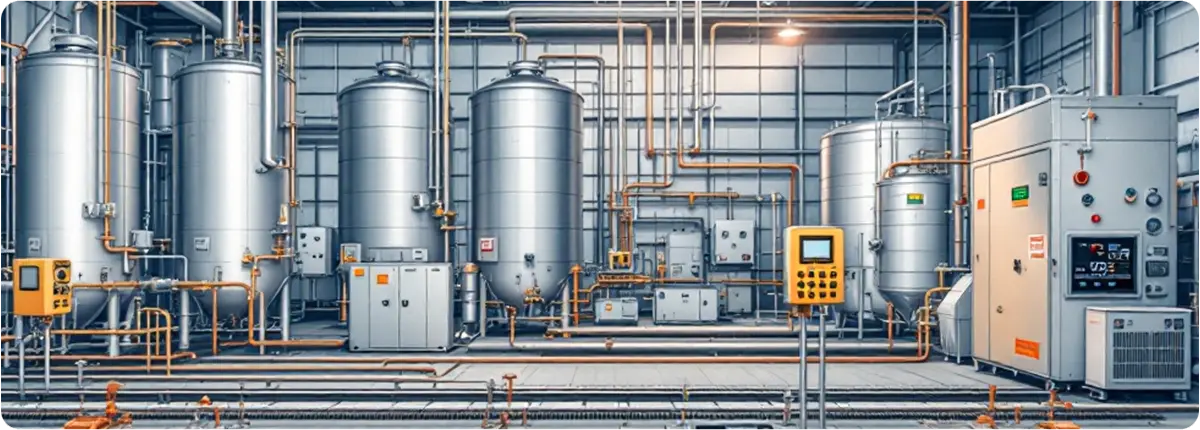Level measurement is one of the most vital aspects of industrial processes. Accurate level control in storage tanks, silos, and pipelines is essential for production efficiency, process safety, and cost optimization.

LEVEL MEASUREMENT METHODS
- Mechanical Methods: Float systems and level indicators; simple but limited in accuracy.
- Hydrostatic Method: Calculates liquid level from the pressure at the tank bottom using pressure sensors.
- Ultrasonic Sensors: Perform non-contact measurements using sound waves. May be affected by foam and vapor.
- Radar (Microwave) Sensors: Provide high accuracy and reliability, suitable for challenging process conditions.
- Capacitive Sensors: Measure changes in dielectric constant, applicable for both liquids and solids.
BASIC PRINCIPLES AND FORMULAS
Hydrostatic level measurement formula: P = ρ · g · h
Where P is pressure (Pa), ρ is fluid density (kg/m³), g is gravitational acceleration (9.81 m/s²), and h is level height (m).
Capacitive level measurement formula: C = (ε · A) / d
Where C is capacitance (F), ε is dielectric constant, A is plate area, and d is distance between plates.
FACTORS AFFECTING MEASUREMENT ACCURACY
- Variations in fluid density, temperature, and viscosity
- Tank geometry and sensor installation position
- Foam, vapor, and pressure fluctuations
- Calibration and regular maintenance of sensors
STANDARDS AND CALIBRATION
- IEC 60079: For explosion-proof level sensors in hazardous environments.
- ISO 9001: Process validation and quality management standards.
- ISO 17025: Accreditation for calibration laboratories.
APPLICATION AREAS
- Monitoring tank and basin levels in water and wastewater treatment plants
- Reactors and storage tanks in chemical industries
- Liquid raw material monitoring in the food industry
- Tank level management in oil and gas industries
CONCLUSION
Level measurement systems are critical for ensuring process safety and efficiency. Correct sensor selection, proper installation, and regular calibration allow industrial plants to operate reliably and sustainably.
